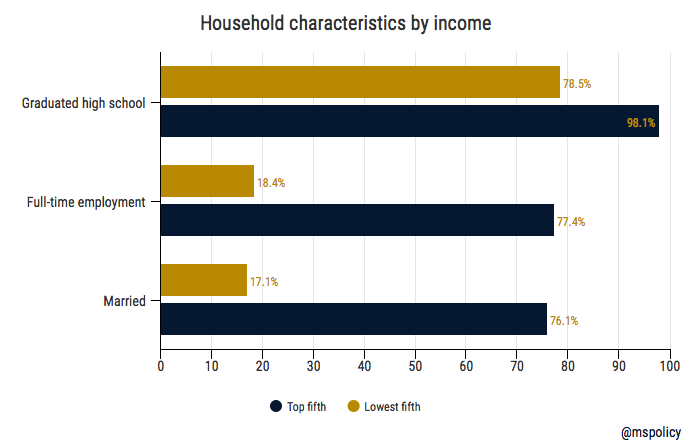For years conservatives, and some liberals, have been advocating for what has been labeled the success sequence. On the surface it’s relatively simple, and there are some variations, but it generally looks like this: Graduate from high school, obtain employment, get married, and then have children only after you are married.
More people than ever are graduating from high school, though that may also be due to a decreasing of standards. Job prospects vary depending on the economy of the day, and where you live, but right now jobs are plentiful. But as we know, it is the second half of the equation – getting married and waiting until you are married to have children – that appears to be a little more difficult. And with dire results.
In the 1960s, as our country embarked on the Great Society and implemented social welfare programs in the name of combating poverty, out-of-wedlock births stood at less than 5 percent nationwide. That percentage had remained stagnant going back to the 1920s. But since the 1960s, it has spiked to over 40 percent.
In Mississippi, the latest numbers show 53.2 percent of children born in the state are to unwed mothers. Though that is slightly better than the 54 percent mark in 2014.
Well, here is what the data shows.

Of the lowest fifth earners in our country, those with an income range of up to $24,638:
Of the top fifth, those who earn more than $126,855:
Many things in life can dictate one’s income. Fortunately, when it comes to graduating high school, working, and getting married before children, each individual can control what path he or she takes.